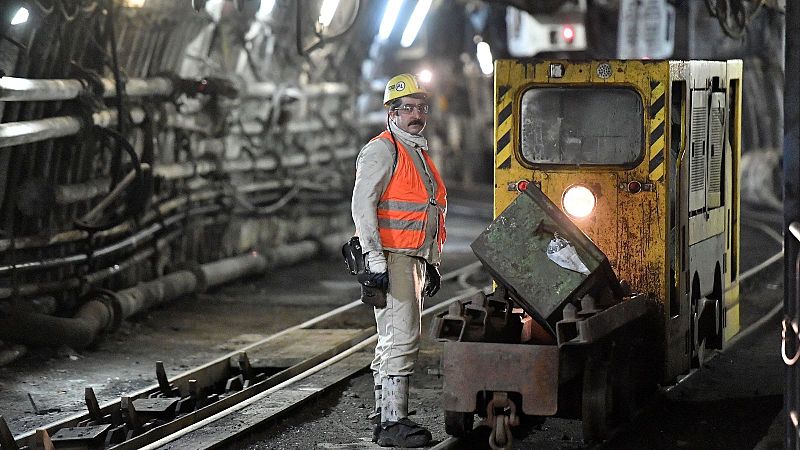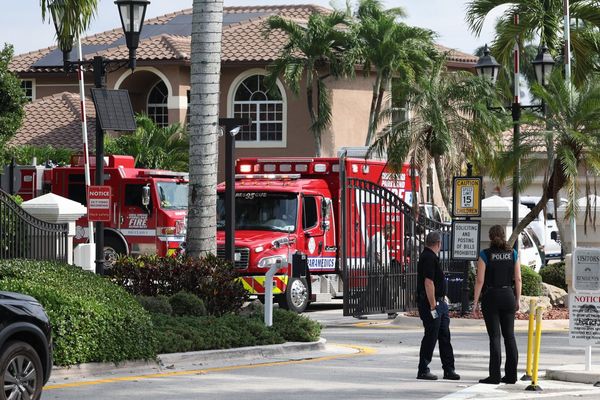
Methane emissions from EU coal mines have dropped for the first time, according to the latest annual report from the International Energy Agency (IEA).
The region is the first to officially constrain this major source of pollution after adopting a Methane Regulation last year. Coal mine methane emissions decreased by 8 per cent in 2024 compared to 2023.
But the greenhouse gas - which is responsible for around 30 per cent of the rise in global temperatures since the Industrial Revolution - remains a huge problem in Europe and around the world.
Record production of oil, gas and coal has kept emissions above 120 million tonnes (Mt) annually, according to the IEA’s 2025 Global Methane Tracker. The analysts included abandoned wells and mines for the first time - finding that these sources contributed around 8 Mt to emissions in 2024.
How has Europe contained methane emissions?
The EU Methane Regulation was the world’s first regulation to set a threshold on how much active underground mines, as well as abandoned and closed underground mines, can emit.
It forces the fossil fuel industry to follow measurement, reporting and verification requirements; bans routine flaring and venting; sets leak detection and repair (LDAR) mandates for all oil and gas facilities; and limits venting in thermal coal mines.
“2025 marks a pivotal year for methane mitigation, with coal mine emissions decreasing for the first time as the EU Methane Regulation for the energy sector takes effect,” says Dr Sabina Assan, methane analyst at global energy think tank Ember.
The new regulation also stipulates that by 2027, importers must demonstrate that imported fossil energy meets the same requirements.
“By ensuring that all fossil fuels meet the same methane standards, the regulation will create a level playing field between importers and domestic producers, extending the regulations' impact far beyond European coal mines,” adds Dr Assan.
This is significant, as most of the methane emissions from fossil fuels used in Europe are tied to imports.
In 2024, according to IEA’s tracker, methane emissions from the supply chain for oil, gas and coal imports were around 6 Mt - nearly four times what Europe emits within its own fossil fuel sector.
Around 55 per cent of the fossil fuel methane emissions that occur within Europe come from the oil and gas sector, mostly from downstream operations. 45 per cent come from coal mines, mainly in Poland and Ukraine.
Upstream oil and gas operations are responsible for the majority of emissions in Romania and the UK. Norway and the Netherlands have the lowest upstream intensities in the world, it says, while most other countries in the region perform near the global average.
How do abandoned underground mines emit methane?
Abandoned underground coal mines constitute a significant and overlooked source of methane emissions.
Methane gas is generated when organic matter turns to coal and is buried underground in these coal seams. When mining creates a route to the surface, much of the methane escapes. If it is not plugged, these emissions can continue for decades after a mine is abandoned.
Globally, the IEA estimates that abandoned coal mines emitted nearly 5 Mt of methane in 2024, and abandoned oil and gas wells released just over 3 Mt. Combined, these sources would be the world’s fourth-largest emitter of fossil fuel methane - after China, the US and Russia, and ahead of Iran, Turkmenistan and India.
Since most emissions result from mines and wells that have recently been abandoned, timely action is critical, the IEA urges. Options include plugging and monitoring wells that are no longer in use, sealing abandoned coal mines, and directing methane flows for energy use.
In total, the energy sector – including oil, natural gas, coal and bioenergy – accounts for more than 35 per cent of methane emissions from human activity.
The agriculture and waste sectors are also major sources of methane emissions, but fossil fuel supply offers the greatest potential for immediate reductions in methane emissions, the IEA notes.







